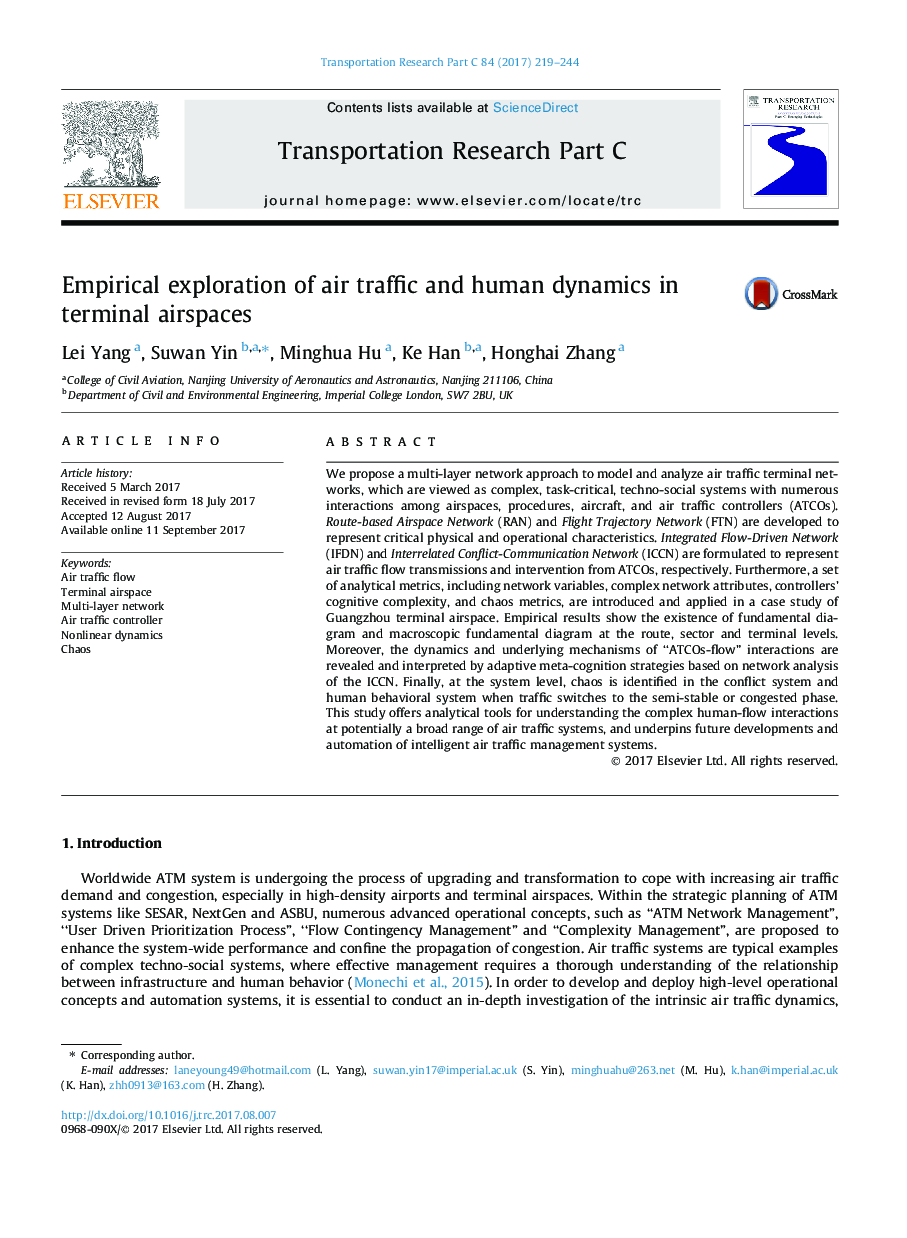| Article ID | Journal | Published Year | Pages | File Type |
|---|---|---|---|---|
| 4968433 | Transportation Research Part C: Emerging Technologies | 2017 | 26 Pages |
Abstract
We propose a multi-layer network approach to model and analyze air traffic terminal networks, which are viewed as complex, task-critical, techno-social systems with numerous interactions among airspaces, procedures, aircraft, and air traffic controllers (ATCOs). Route-based Airspace Network (RAN) and Flight Trajectory Network (FTN) are developed to represent critical physical and operational characteristics. Integrated Flow-Driven Network (IFDN) and Interrelated Conflict-Communication Network (ICCN) are formulated to represent air traffic flow transmissions and intervention from ATCOs, respectively. Furthermore, a set of analytical metrics, including network variables, complex network attributes, controllers' cognitive complexity, and chaos metrics, are introduced and applied in a case study of Guangzhou terminal airspace. Empirical results show the existence of fundamental diagram and macroscopic fundamental diagram at the route, sector and terminal levels. Moreover, the dynamics and underlying mechanisms of “ATCOs-flow” interactions are revealed and interpreted by adaptive meta-cognition strategies based on network analysis of the ICCN. Finally, at the system level, chaos is identified in the conflict system and human behavioral system when traffic switches to the semi-stable or congested phase. This study offers analytical tools for understanding the complex human-flow interactions at potentially a broad range of air traffic systems, and underpins future developments and automation of intelligent air traffic management systems.
Related Topics
Physical Sciences and Engineering
Computer Science
Computer Science Applications
Authors
Lei Yang, Suwan Yin, Minghua Hu, Ke Han, Honghai Zhang,
